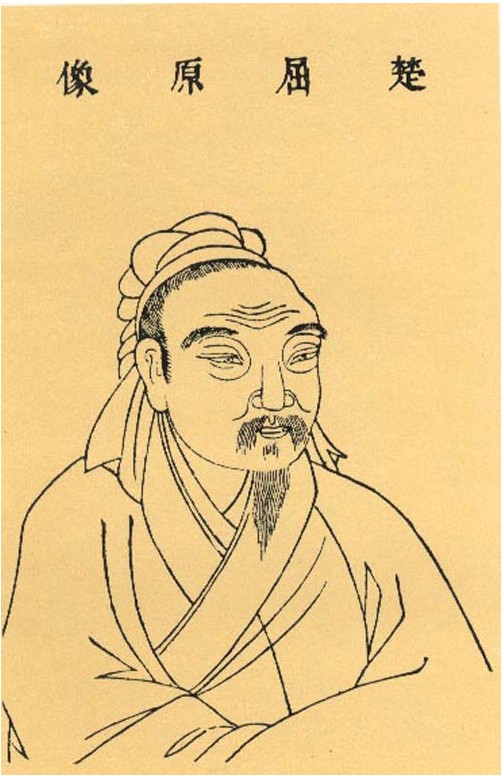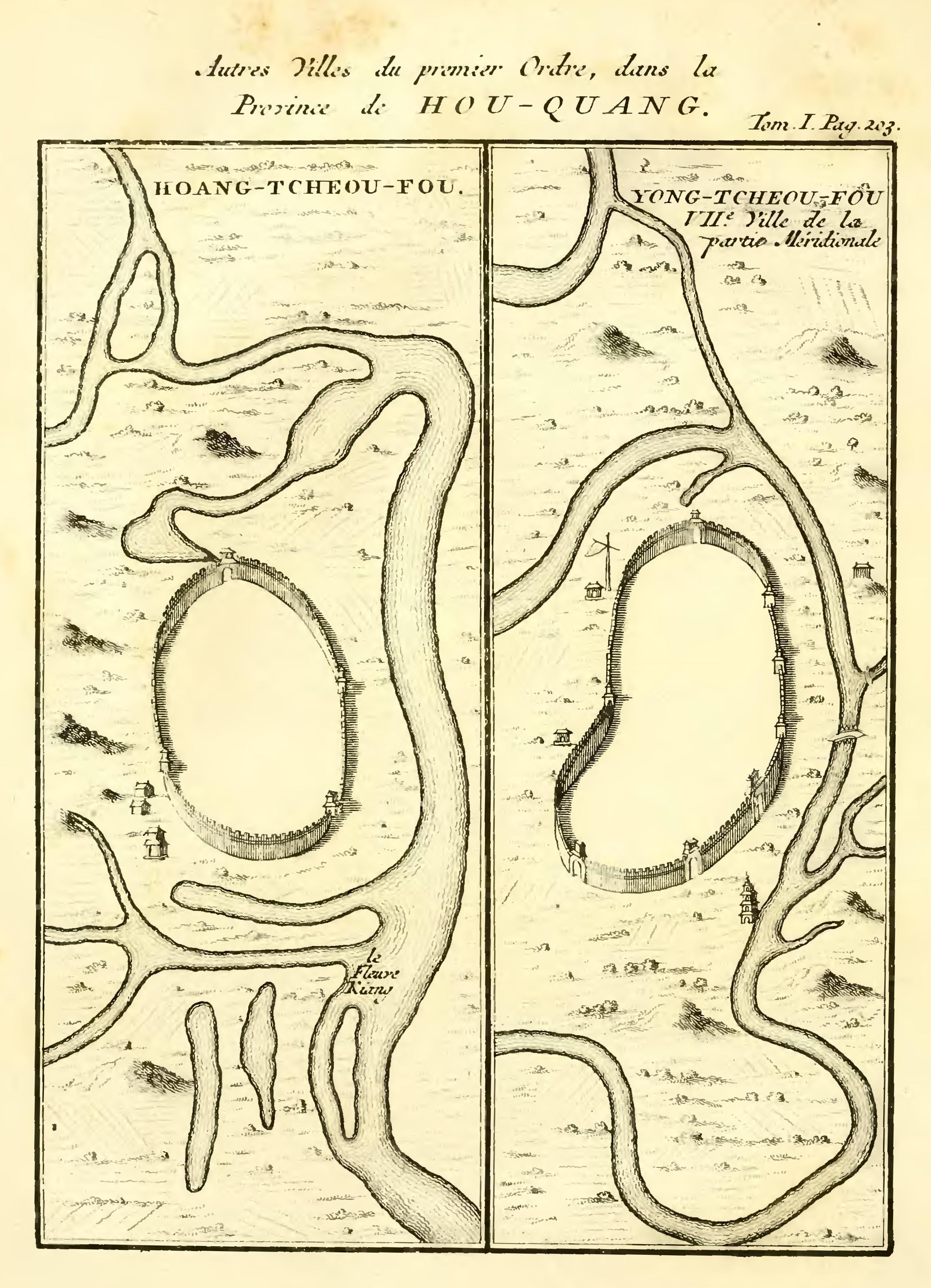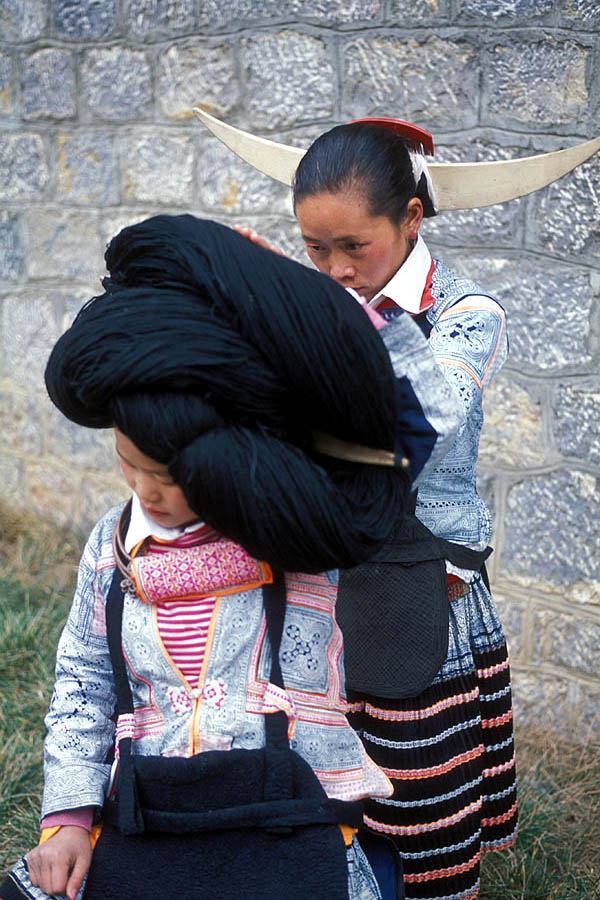|
Hubei Cuisine
Hubei cuisine, also known as Chu cuisine or E cuisine, is derived from the native cooking styles of Hubei Province in China. History Hubei cuisine has a history of more than 2,000 years. The names of dishes and cuisine styles can be found in ancient literature such as ''Chuci'' of Qu Yuan. Ingredients As Hubei has plenty of lakes, rivers and marshlands, freshwater produce are used as major ingredients in the local cuisine. A key ingredient that is found within many Hubei-style dishes is the lotus root. Style Hubei cuisine emphasizes the preparation of ingredients and the matching of colors. It specializes in steaming techniques. Its style is influenced by the cooking methods of the cuisines of neighboring provinces such as Sichuan and Hunan. As a result, Hubei cuisine also uses dried hot pepper, black pepper and other spices to enhance the flavor of dishes. Hubei cuisine comprises three distinct styles: * Wuhan style specializes in soups as well as noodle dishes, such as hot ... [...More Info...] [...Related Items...] OR: [Wikipedia] [Google] [Baidu] |
Hubei
Hubei (; ; alternately Hupeh) is a landlocked province of the People's Republic of China, and is part of the Central China region. The name of the province means "north of the lake", referring to its position north of Dongting Lake. The provincial capital, Wuhan, serves as a major transportation hub and the political, cultural, and economic hub of central China. Hubei's name is officially abbreviated to "" (), an ancient name associated with the eastern part of the province since the State of E of the Western Zhou dynasty of –771 BCE; a popular name for Hubei is "" () (suggested by that of the powerful State of Chu, which existed in the area during the Eastern Zhou dynasty of 770 – 256 BCE). Hubei borders the provinces of Henan to the north, Anhui to the east, Jiangxi to the southeast, Hunan to the south, Chongqing to the west, and Shaanxi to the northwest. The high-profile Three Gorges Dam is located at Yichang, in the west of the province. Hubei is the 7th-largest p ... [...More Info...] [...Related Items...] OR: [Wikipedia] [Google] [Baidu] |
Chuci
The ''Chu ci'', variously translated as ''Verses of Chu,'' ''Songs of Chu'', or ''Elegies of Chu'', is an ancient anthology of Chinese poetry including works traditionally attributed mainly to Qu Yuan and Song Yu from the Warring States period (ended 221 BC), and also a large number of works composed several centuries later, during the Han dynasty.Hawkes, David. Ch'u Tz'u: ''Songs of the South, an Ancient Chinese Anthology''. (Oxford: Clarendon Press, 1959), 28. The traditional version of the ''Chu ci'' contains 17 major sections, anthologized with its current contents by Wang Yi, a 2nd-century AD librarian who served under Emperor Shun of Han. The early (pre-Qin dynasty) Classical Chinese poetry is mainly known through the two anthologies the ''Chu ci'' and the ''Shi jing'' (''Classic of Poetry'' or ''Book of Songs''). Background ''Chu ci'' was named after a form of poetry that originated in the State of Chu, which was located in what is now central China, but was then ... [...More Info...] [...Related Items...] OR: [Wikipedia] [Google] [Baidu] |
Qu Yuan
Qu Yuan ( – 278 BCE) was a Chinese poet and politician in the Chu (state), State of Chu during the Warring States period. He is known for his patriotism and contributions to Classical Chinese poetry, classical poetry and verses, especially through the poems of the ''Chu Ci'' anthology (also known as ''The Songs of the South'' or ''Songs of Chu''): a volume of poems attributed to or considered to be inspired by his Verse (poetry), verse writing. Together with the ''Classic of Poetry, Shi Jing'', the ''Chu Ci'' is one of the two greatest collections of ancient Chinese verse. He is also remembered in connection to the supposed origin of the Dragon Boat Festival. Historical details about Qu Yuan's life are few, and his authorship of many ''Chu Ci'' poems has been questioned at length. However, he is widely accepted to have written "The Lament," a ''Chu Ci'' poem. The first known reference to Qu Yuan appears in a poem written in 174 BCE by Jia Yi, an official from Luoy ... [...More Info...] [...Related Items...] OR: [Wikipedia] [Google] [Baidu] |
Sichuan Cuisine
Sichuan cuisine, alternatively romanized as Szechwan cuisine or Szechuan cuisine (, Standard Mandarin pronunciation: ), is a style of Chinese cuisine originating from Sichuan Province. It has bold flavours, particularly the pungency and spiciness resulting from liberal use of garlic and chili peppers, as well as the unique flavour of Sichuan pepper. Some examples are Kung Pao chicken and Yuxiang shredded pork. There are many local variations within Sichuan Province and the neighbouring Chongqing Municipality, which was part of Sichuan Province until 1997. Four sub-styles of Sichuan cuisine include Chongqing, Chengdu, Zigong and Buddhist vegetarian style. UNESCO declared Chengdu, the capital of Sichuan Province, to be a city of gastronomy in 2011 to recognise the sophistication of its cooking. History Sichuan in the Middle Ages welcomed Middle Eastern crops, such as broad beans, sesame and walnuts. Since the 16th century, the list of major crops in Sichuan has even been le ... [...More Info...] [...Related Items...] OR: [Wikipedia] [Google] [Baidu] |
Hunan Cuisine
Hunan cuisine, also known as Xiang cuisine, consists of the cuisines of the Xiang River region, Dongting Lake and western Hunan Province in China. It is one of the Eight Great Traditions of Chinese cuisine and is well known for its hot and spicy flavours, fresh aroma and deep colours. Common cooking techniques include stewing, frying, pot-roasting, braising and smoking. Due to the high agricultural output of the region, ingredients for Hunan dishes are many and varied. History The history of the cooking skills employed in Hunan cuisine dates back to the 17th century. The first mention of chili peppers in local gazettes in the province date to 1684, 21st year of the Kangxi Emperor. During the course of its history, Hunan cuisine assimilated a variety of local forms, eventually evolving into its own style. Some well-known dishes include fried chicken with Sichuan spicy sauce () and smoked pork with dried long green beans (). Hunan cuisine consists of three primary styles: * Xia ... [...More Info...] [...Related Items...] OR: [Wikipedia] [Google] [Baidu] |
Wuhan
Wuhan (, ; ; ) is the capital of Hubei, Hubei Province in the China, People's Republic of China. It is the largest city in Hubei and the most populous city in Central China, with a population of over eleven million, the List of cities in China by population, ninth-most populous Chinese city and one of the nine National Central City, National Central Cities of China. The name "Wuhan" came from the city's historical origin from the conglomeration of Wuchang District, Wuchang, Hankou District, Hankou, and Hanyang District, Hanyang, which are collectively known as the "Three Towns of Wuhan" (). Wuhan lies in the eastern Jianghan Plain, at the confluence of the Yangtze river and its largest tributary, the Han River (Hubei), Han River, and is known as "Nine Provinces' Thoroughfare" (). Wuhan has historically served as a busy city port for commerce and trading. Other historical events taking place in Wuhan include the Wuchang Uprising of 1911, which led to the end of 2,000 years of d ... [...More Info...] [...Related Items...] OR: [Wikipedia] [Google] [Baidu] |
Hot Dry Noodles
Hot dry noodles (), known in Chinese as reganmian, also transliterated as dried and spicy noodles, is a traditional dish of Wuhan, the capital of Hubei province in central China. Hot dry noodles have an 80-year history in Chinese food culture; they are unique because the noodles are not in a broth like most other Asian-style hot noodle dishes. They are the most significant, famous and popular breakfast food in Wuhan, often sold by street carts and restaurants in residential and business areas.Yu , J. F. (2006, 10 13). eb log message Retrieved from http://wuhanstories.blogspot.ca/2006/10/needless-to-say-hot-dry-noodle-is-most.html Breakfasts such as hot dry noodles are available from about 5 am, and usually appear at Wuhan's night markets as a late-night snack. These noodles can be prepared within minutes and are affordable, so they are a popular breakfast. There are hot dry noodle restaurants all over the city. Typical hot dry noodle dishes contain soy sauce, sesame paste, p ... [...More Info...] [...Related Items...] OR: [Wikipedia] [Google] [Baidu] |
Hot Pot
Hot pot or hotpot (), also known as soup-food or steamboat, is a cooking method that originated in China. A heat source on the dining table keeps a pot of soup stock simmering, and a variety of Chinese foodstuffs and ingredients are served beside the pot for the diners to put into the hot stock. Description Hot pot is a flavorful broth traditionally served inside a large metal pot. The broth is brought to a boil and left simmering for the duration of the meal. Raw ingredients, such as meat and vegetables, are placed into the simmering broth and thus cooked. The cooked pieces are dipped into dipping sauces for additional flavor. Hot pot is considered a main course and is usually served without rice or noodles on the side. Hot pots can be prepared and eaten at home or in a restaurant. Typical hot pot ingredients include thinly sliced meat, leaf vegetables, mushrooms, vermicelli, sliced potatoes, bean products, egg dumplings, tofu, and seafood. Raw ingredients are pre-sliced ... [...More Info...] [...Related Items...] OR: [Wikipedia] [Google] [Baidu] |
Huangzhou
Huangzhou District is an District of the People's Republic of China, urban district of Huanggang, Hubei province, China. History In 845 BC Marquis Wen 文侯 Huang Meng 黃孟 (aka Huang Zhang 黃璋) moved the capital of the State of Huang from Yicheng to Huangchuan (present-day Huangchuan, Henan). Huang Xi's descendants ruled State of Huang until 648 BC when it was destroyed by the State of Chu. The Marquis of Huang, Marquis Mu 穆侯 Huang Qisheng 黃企生, fled to the state of Qi. The people of Huang were forced to relocate to Chu. They settled in the region of present-day Hubei province, in a region known as the Jiangxia Prefecture 江夏郡 during the Han dynasty (206 BC-AD 220). There are many places in this region today that were named after Huang e.g. Huanggang, Huangpi, Huangmei, Huangshi, Huang'an (now Hong'an), Huangzhou etc. A large number of the people of Huang were also relocated to regions south of the Yangtze River. Huangzhou was previously a separate city wh ... [...More Info...] [...Related Items...] OR: [Wikipedia] [Google] [Baidu] |
Jingzhou
Jingzhou () is a prefecture-level city in southern Hubei province, China, located on the banks of the Yangtze River. Its total residential population was 5,231,180 based on the 2020 census, 1,068,291 of whom resided in the built-up (''or metro'') area comprising two urban districts. Jingzhou's central urban area has grown out of Shashi City and Jingzhou Town (historically also known as Jiangling); their names were preserved in the names of Shashi District and Jingzhou District, which include the city's historical center, as well as Jiangling County, which administers the suburban areas of the larger historical area of Jiangling. The name "Shashi" also remains in the names of a number of local facilities, such as Jingzhou Shashi Airport and a railway freight station. Toponymy The contemporary city of Jingzhou is named after Jingzhou (ancient China), ancient province of the same name, which was one of the nine provinces of ancient China. Said province was named after the nearb ... [...More Info...] [...Related Items...] OR: [Wikipedia] [Google] [Baidu] |
Miao People
The Miao are a group of linguistically-related peoples living in Southern China and Southeast Asia, who are recognized by the government of China as one of the 56 List of ethnic groups in China, official ethnic groups. The Miao live primarily in southern China's mountains, in the provinces of Guizhou, Yunnan, Sichuan, Hubei, Hunan, Guangxi, Guangdong, and Hainan. Some sub-groups of the Miao, most notably the Hmong people, have migrated out of China into Southeast Asia (Myanmar, Northern Vietnam, Laos, and Thailand). Following the History of Laos since 1945#Communist Laos, communist takeover of Laos in 1975, a large group of Hmong refugees resettled in several Western nations, mainly in the United States, France, and Australia. Miao is a Chinese language, Chinese term, while the component groups of people have their own autonyms, such as (with some variant spellings) Hmong people, Hmong, Hmu, Qo Xiong language, Xong (Qo-Xiong), and A-Hmao. These people (except those in Hainan) spea ... [...More Info...] [...Related Items...] OR: [Wikipedia] [Google] [Baidu] |
Huangshi
Huangshi (), alternatively romanized as Hwangshih, is a prefecture-level city in southeastern Hubei province, People's Republic of China. Its population was 2,469,079 inhabitants at the 2020 census; 1,567,108 of whom lived in the built-up (''or metro'') area made up of 4 urban districts plus the city of Daye, now being part of the agglomeration. History In 845 BC Marquis Wen () Huang Meng (), or Huang Zhang () moved the capital of the State of Huang from Yicheng to Huangchuan (present-day Huangchuan, Henan). Huang Xi's descendants ruled State of Huang until 648 BC when it was destroyed by the State of Chu. The Marquis of Huang, Marquis Mu () Huang Qisheng (), fled to the state of Qi. The people of Huang were forced to relocate to Chu. They settled in the region of present-day Hubei province, in a region known as the Jiangxia Prefecture () during the Han dynasty (206 BC-AD 220). On 9 March 1944, 18 CACW B-25s escorted by 24 P-40s bombed a foundry and floating docks at Huangsh ... [...More Info...] [...Related Items...] OR: [Wikipedia] [Google] [Baidu] |
.jpg)



.jpg)





